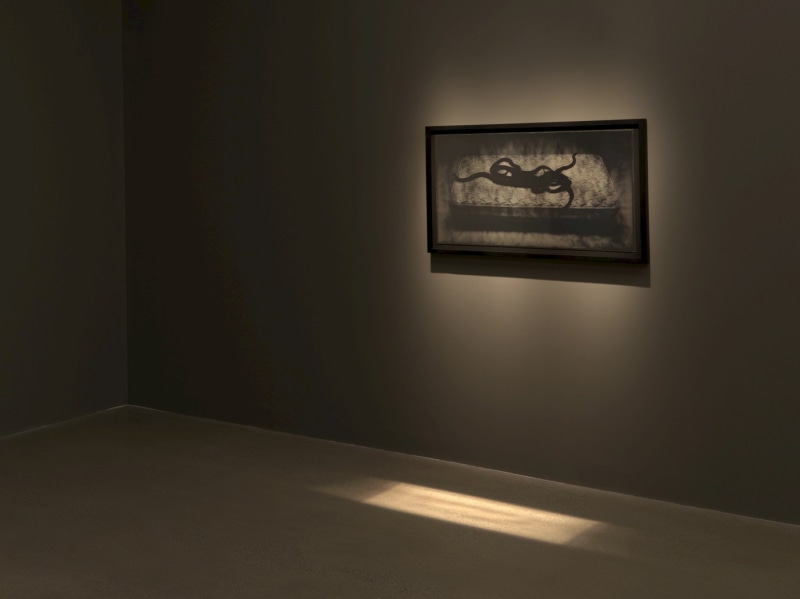Adam Fuss: Home and the World
Timothy Taylor Gallery is pleased to announce an exhibition of new work by the New York based British Photographer Adam Fuss. Emphasising themes of transformation and perception, Fuss seeks not to describe an object with the detailed clarity of traditional photography, but rather in ghostly and otherworldly manifestations of light and shadow. An expert in the field of camera-less photography, Fuss will present a new series of photograms and daguerreotypes for his second solo show at the gallery.
As with Fuss’s previous bodies of work, this exhibition stems from inspiration rooted in childhood. Remembering an oft- played board game, Snakes and Ladders, Fuss researched its original use. As a game of morality for young players in ancient India, it showed a path to enlightenment gained by good deeds – while ladders elevated players closer to Nirvana, the snakes returned them to earth. Where in this context the snake is a metaphor for the negative and corrupt, Fuss associates the creatures with the idea of a regenerative life force, a pure energy echoing the un-dulation of waves and the cycle of reincarnation.
The snake’s dual symbolic meaning presented a paradox, and a focal point for Fuss’s recent work, which has long been concerned with the tensions inherent to opposites (male vs. female, light vs. dark). The format of the Snakes and Ladders game provided Fuss with a template for a series of large scale photograms – with its horizontal, earth-bound snakes and vertical, heaven-reaching ladders, the game offers multiple dimensions and an implied journey through time and space.
For several images, Fuss placed writhing snakes on a grid of newspapers, their chaotic intertwining creating a new game board, the background referencing a daily calendar or landscape of time. The snakes movements, inherently abstract, offer additional associations. Works in the Alphabet series reference calligraphic texts, and explore how written languages appear to take their shape from animal forms. Prior to making photographic work Fuss was a painter, and the artist acknowledges the influence of Jackson Pollock’s gestural, expressionistic brushstrokes upon these compositions.
In a separate section of the gallery, the snake theme will be continued in a series of ethereal daguerreotypes, in all likelihood the largest ever made. The images are composed of an unmade mattress in an ambiguous space, the bed either empty or topped with snakes. On the floor, like a portal to the earth, lays a silvery daguerreotype of a vagina. In this context, Fuss does not see the vagina as a sexual organ, but rather as “architecture”, a door to the origins of life.
In the Caduceus series, Fuss references the snake-twined staff of the Greek god Hermes. The symbol of the caduceus originated with the mythical story of Tiresias, and his discovery of two snakes copulating on the ground. Attempting to separate the snakes with his staff, Tiresias is turned into a woman. The action is repeated seven years later, and Tiresias is retransformed into a man. The energy of the united snakes, powerful enough to transform the physical characteristics of opposite sexes, remained associated with the magical qualities of the caduceus.
Adam Fuss was born in London in 1961, and has lived and worked in New York City since 1982. Forthcoming solo exhibitions include Adam Fuss, Fundacion Mapfre, Madrid, Spain (2011). Fuss’ work will be included in the group show Shadow Catchers: Camera-Less Photography, curated by Martin Barnes at the Victoria and Albert Museum, London (October 2010). His work is included in public and private collections worldwide including Albright-Knox, New York, USA; Denver Art Museum, Denver, Colorado, USA; Israel Museum, Israel; Los Angeles County Museum of Art, Los Angeles, California, USA; The Metropolitan Museum of Art, New York, USA; Museum of Modern Art, New York, USA; Victoria and Albert Museum, London, UK.








